At this moment we are still extremely busy imagining that the lockdown will end, the restrictions on weddings and gatherings will ease and our appetite for beauty and celebration will return. It would be tough to predict the new landscape of the wedding fashion but all we can assure for now is that the new wedding wear would be more classic but, hey, remember your nuptials are just yours. They can be as unique as you want to make them, and this season is no different. What is different is however the new set of trends couples may want to incorporate into their special day, being more conscious about the footprint they leave with their wedding, feeding a fresh trend in the bridal industry: “the minimony” .i.e., with the gathering of not more than fifty guests, the weddings and ceremonies have taken a back seat for now with sustainability as the driver.
From pearl and crystal-embellished beauties that ooze elegance and romantic vibes to all-traditional effortless looks, we have seen almost all of the varied styles but weddings this season would no longer be about glitz and bling, the brides want to wear clothes which are breathable, light-weight and sophisticated, that’s why they are opting for fabrics such as mul, muga, summer silk, tussar or even regenerated fabrics for the easy-breezy vibe, welcoming the return of the handicrafts with the silhouettes that can adapt ever-changing versatile trends. Rewinding or inheriting the sarees from our mothers and grandmothers and recycling them to create trousseau pieces is one of the aspects of sustainability, keeping the traditions on-going and the weaves alive for generations holding onto the emotional regards. The intimate weddings would surely allow us to take things up with simplicity in a contemporary style, not going bold with either outfit, makeup, or jewellery. The ethnic yet ravishing look can be achieved if we go simple and moderate paired with classic jewellery and OTT make-up.
We usually love seeing the new trends that determine the photos of the weddings, even when we are not engaged we take pleasure in pouring over the arrangements. For quite some time now, weddings have been following the design sensibility that makes them well-photographed, now fashion too has to be ready for the makeover especially as the weddings are going micro. The couples are not just keeping up with the styles and colours but are fulfilling their responsibilities towards nature too with the environment on the top of their minds, concentrating on every detail, not just bridal sets but from food to decoration, focusing on the things that matter and celebrating it in a meaningful, personal way.
Tag: sustainableclothing
May
May
As we collectively move towards another two weeks in lockdown, the earth has pressed a pause button on most of our personal and professional lives. The Fashion Industry as we know it no longer exists. As global financial markets tumble, non-essential markets shut their doors and consumers lock themselves indoors under government directives, the humankind has come to a standstill. As an industry, we witnessed shocks to supply chains and sales. Stocks are down and retail markets struggle to keep their employees on the payroll. We now have an industry in front of us that needs to be built from the ground up. It’s time to redesign and reimagine our business models as producers and revaluate our decisions as consumers. Since we have to start over again, we can do it right this time.
The fashion industry is particularly problematic due to its swivel-eyed pace of change that it not only undergoes but also promotes. It encourages consumers to buy into styles to stay on-trend. As a result, we as fashion consumers contribute to 4% of the world’s waste each year. As an industry, we contribute to 10% of the global carbon emissions and 20% of wastewater. Fashion sucks up more energy than both aviation and shipping combined.
The question that now arises, is that how do we as consumers start over? How do we get it right? How do we make use of all this time we have to rethink our decisions? Shopping resale is both sustainable and better for the environment. Thrift shopping helps the planet and your cool factor. The saying “one man’s trash is another man’s treasure” is now truer than ever.
COVID-19 can live on and thus be passed through used and pre-owned items. It is this stigma that can affect the future of the resale industry. This puts us all in a pickle, but is it warranted? It is preferable to shop resale if not advised with the right precautions being taken. It’s time for both sellers and consumers to be more proactive about cleaning and disinfecting items. Wash garments in the hottest water recommended for the fabric, wipe your shoes and bags with alcohol wipes as soon as you purchase them. It is important to take all the necessary precautions.
In light of the events, it’s wiser to shop from hobbyist sellers like Etsy, Instagram pages, and online resellers as it not only provides them with an income but is safer for you as compared to big box stores that have a large number of touchpoints.
In this new post -COVID-19 world the factors that need to be considered before making your new purchase have changed. It’s not about “Can I buy this from a Thrift store?” anymore. It is more about considering questions like “What do I need?”, “Can I make this on my own?”, “How much use will I get out of this?”, “Do I have a substitute?”, “Can this be borrowed?”, and so on. Numerous questions based on lifestyle choices need to be considered if we wish to start over right.
Apr
A window to Indian sensibilities around sustainable practices, Vaishali S’s new flagship store interiors are an intracultural homecoming that brings a raw essence to the room.
Within the doors and windows of the reminiscent interiors are held narrative allegories of rebirth. Vaishali S built this store much like her eponymous label, with scrupulous detailing and a personal touch to each sculptural silhouette.
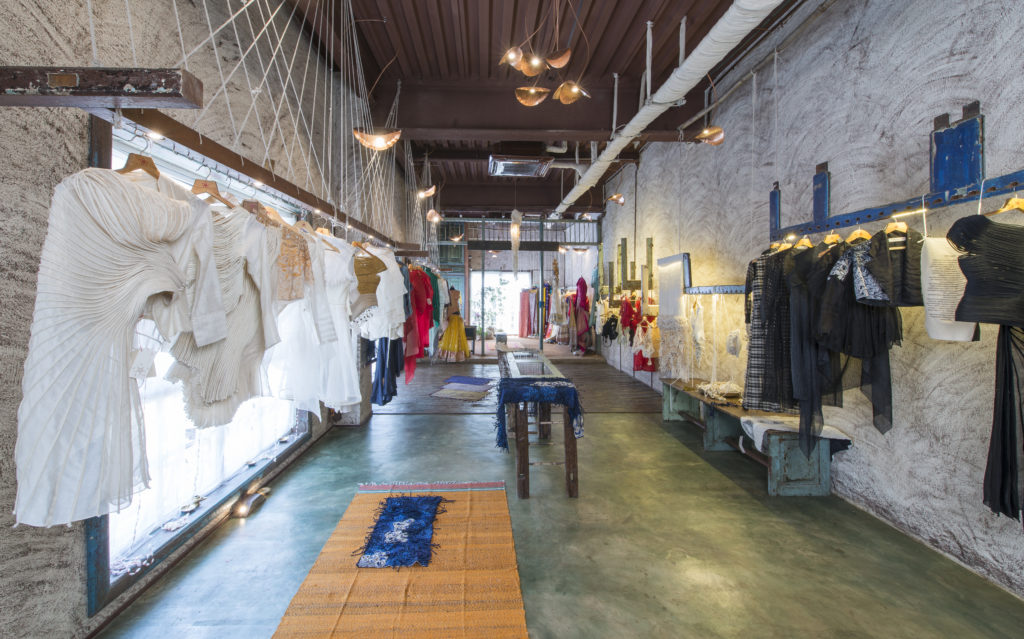
Doors from the abandoned dumping grounds of Saki Naka and Jogeshwari picked to give these pieces of wood meaning again, transform the unpurposed slabs into a layered family of benches, doors and window frames is a responsible effort that draws tenacity to the store.
To glimpse through the kaleidoscope of these stories would be akin to an autobiography of the store doors:
‘I remember everything. Every single family that has made its humble abode within my confines, and the tear as I was pulled away from my ancestral home. The bumps of the truck dislodged me, and there I was, stripped of all meaning, lying at the bottom of a dumping ground.
I didn’t feel sorry for myself, I only felt the loss of a home. This raw emotion settled into my surface for decades like water seeping into crude wood.
Then, I was picked up and brought back to life. As I survey the grandiose of the Kalaghoda precinct, I feel like a humble passenger in the train of life, sitting next to a colonial Englishman smoking a pipe, but I remember everything.
I remember with fondness the families that closed me into their hearts while building a home for themselves. I hope that when you come to visit, you will sense nostalgia in this simple villager in your midst.’
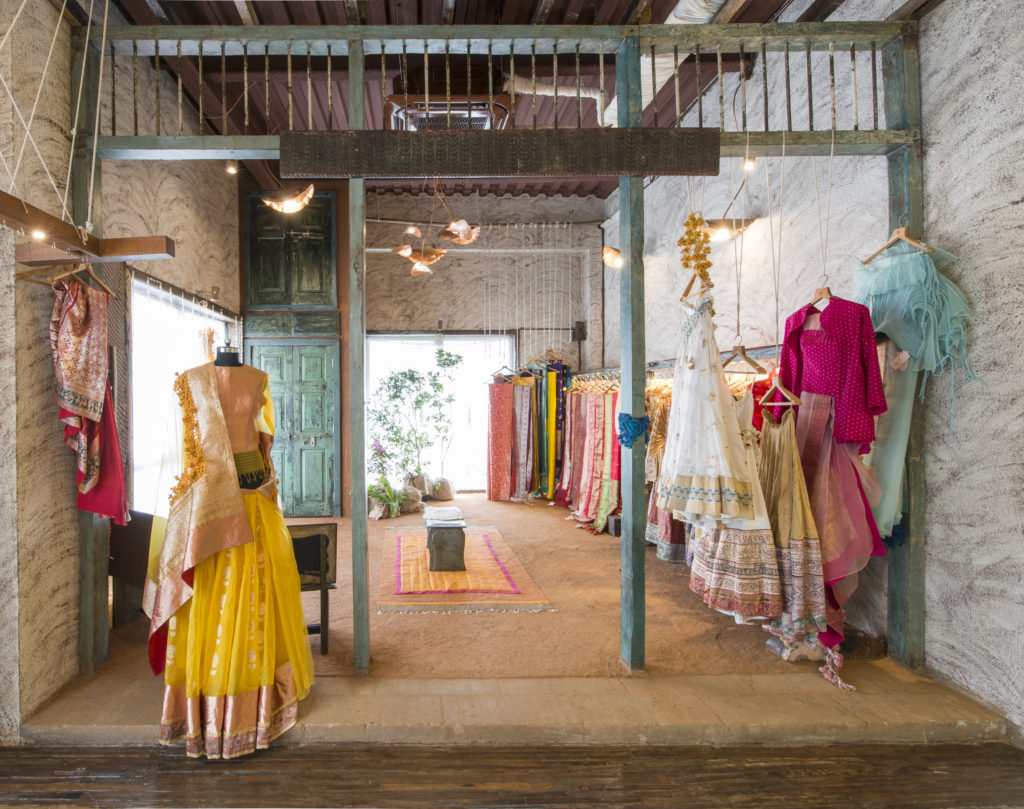
The ancient craft of handloom weaves everything together here, brings back fusion in texture, an orchestra of form. Shaded in copper-bronze, rock, mud, and wood, the color palette of these interiors is an uninterrupted flow of hue, that has come together guided by coincidental intuition.
This dedication to earthen furniture paints a village scene enhanced by mogra garlands that line crude edge surfaces, draped over the ethereal forms of homegrown fabrics. Each piece has a beautiful choreography that naturally coincides with the ensembles and the art. From the chair that has a grandmother’s lap thread loop around its wooden base to the simple handloom threads crisscrossing across space, the atmosphere created is one of nostalgia, but also of rememorizing a childhood home.
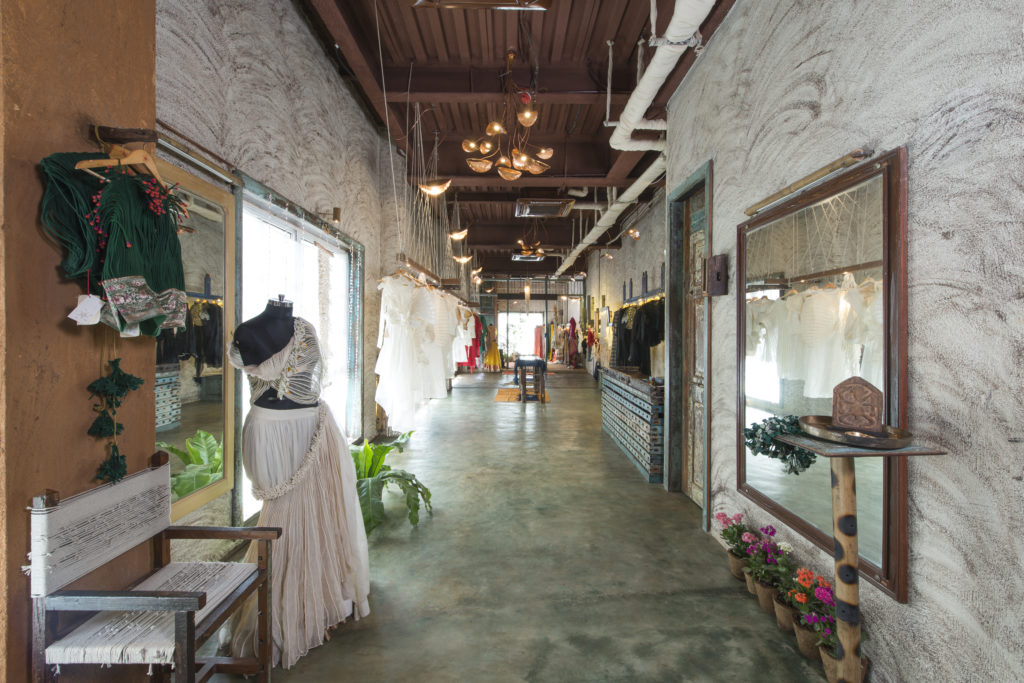
Inside the doors of Vaishali S flagship store, this artistic resonance is absorbed into hand-polished cow dung and mud walls. This perspective of keeping the interiors cool is an age-old technique taking root in the concrete city. A wall with repurposed wood turned into lamps kept integral to the unpolished façade; frames the soul of Vaishali S within its intrinsic storytelling.
The depth to each upcycled piece is a beeline to the zero-waste concept that the label has been inculcating into ensembles since it’s conception. The unspooling thread of Vaishali S store interiors is a journey to the ancestral secrets of sustainability, written with simple words, narrated aesthetically.
Apr
To weave is to create a skin out of fabric. And to feel free in one’s skin is a rarity. For marginalized persons in the global industry, this means to overcome hurdles of racism and sexism, in order to feel identified with and not labeled by the norms and standards of the fashion industry.
To achieve this threshold keeping in tandem with nature brings core sustainability to the open-lens outlook held by some niche Indian labels building a hearth of eco-sensible mindsets with their innovative approach. This marks a beautiful pause in the Indian fashion industry, where we are returning to the tenacity of our heritage, engaging in a retrouvaille of handmade crafts.
The way you look says a lot about how you identify, and where you come from, and this is the poignant epiphany taking place with Indian fashion labels today.
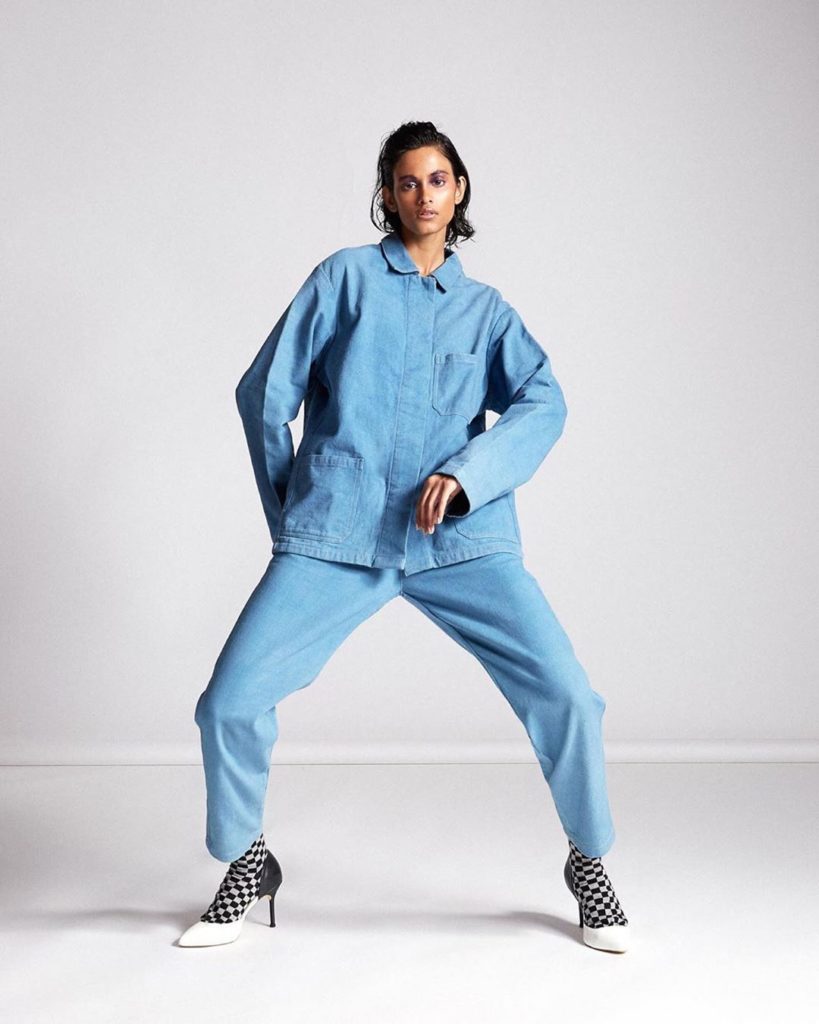
One such label is Naushad Ali, based in Pondicherry, a minimalist hub of global perspectives, drawn from the depth of traditional craftsmanship. Measuring crisp lines in handloom thread, this label follows a 100% natural process from yarn to dye, leading a zero-waste approach since 2014. Working with the weaving clusters in West Bengal, the label inculcates ethnic threadwork in gender-fluid apparel, keeping the tone classy and clean, cutting edge with an international touch.
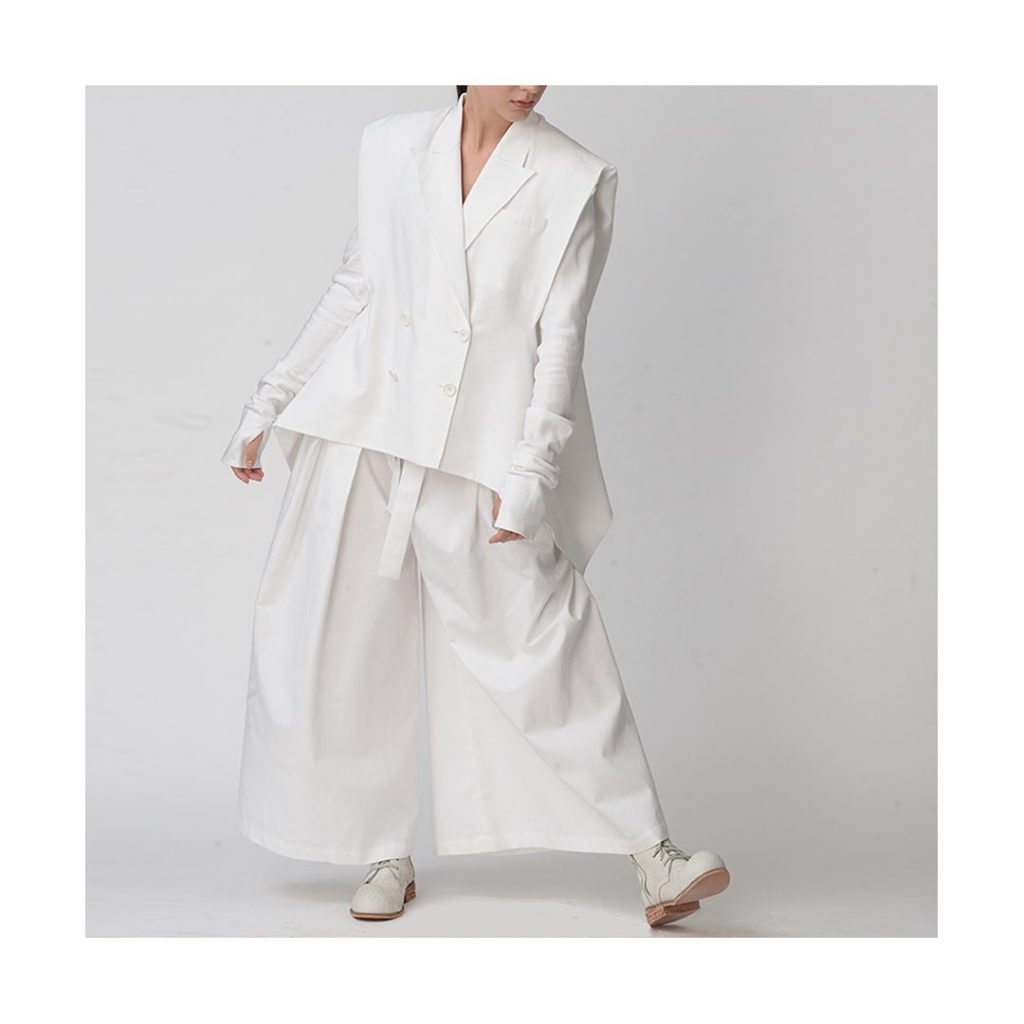
Rajesh Pratap Singh, a vintage when it comes to fashion labels, has an eco-conscious lead in the industry. With it’s stellar contributions to sustainable fashion, the 1997-established label is also mapping a gender-fluid paradigm, one where the essence of responsible practices are cherished and unbiased clothing is brought into a safe space.
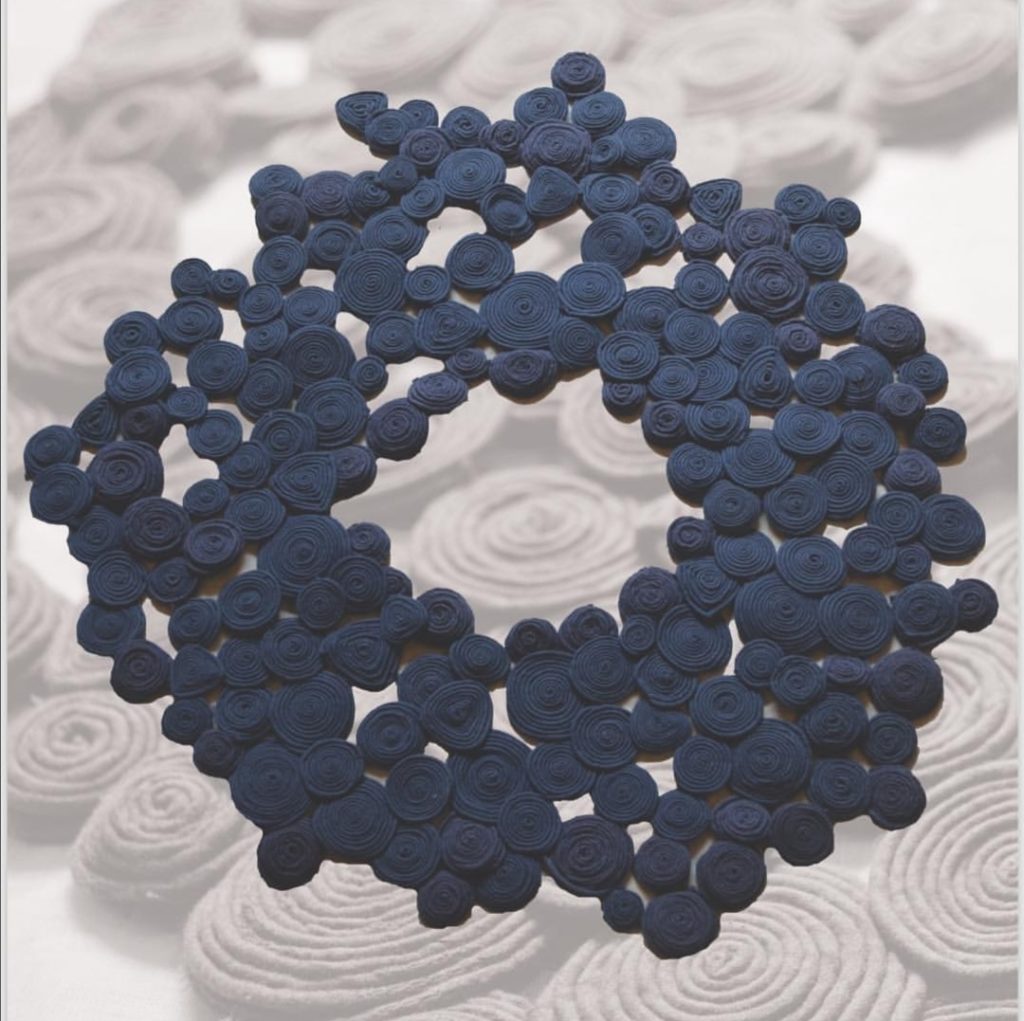
The harbinger of Khunn to international markets, Vaishali S is a cartographer of ethical and eco-conscious complexities. Maintaining a zero-waste approach since the conception of the label, Vaishali S has delved into the intricate layers of weaving communities spread across India. From marking Guledagudda, the birthplace of Khunn on the map to underlining the unique skill of Indian traditional artisanry, the label has a signature spectrum of accessories made to create security around the concept of freedom.
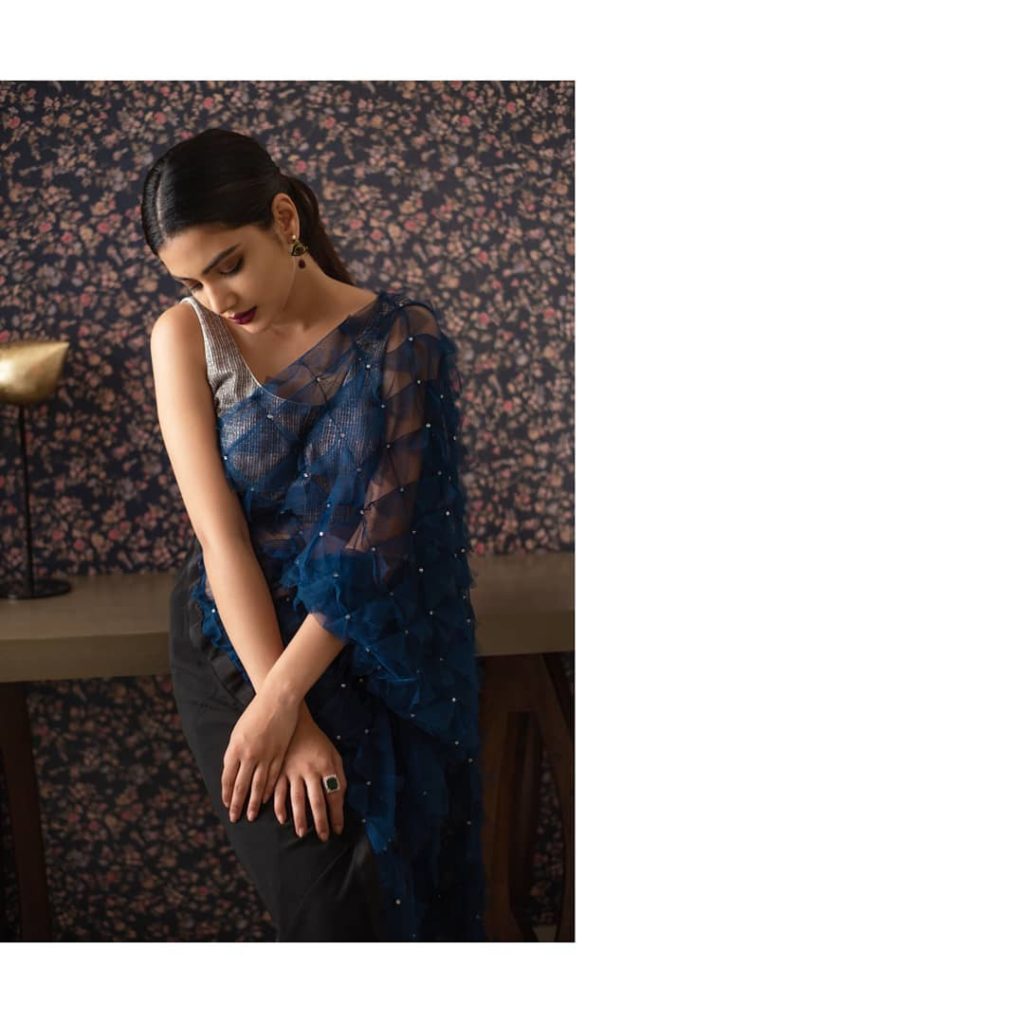
‘Jod’, a collection by Priyanka Raajiv is testimony to the integrity of upcycling unpurposed fabric pieces. In the numerous weaving cultures explored by this label, hand embroidery flourishes as an aspect to look through the lens of the artisan. In this collection, remnants of emotionally cherished fabric pieces are upcycled through handcrafting a color palette of corals, blue-greens and soothing shades of peach, airbrushed with a tone of eco-fashion sensibilities. While it caters to women, this collection has the versatility in its featherlight silhouettes of wardrobe pieces like scarves, which can be donned by anyone.

The weaver of Khadi as he is often harkened, Anurag Gupta has a long-standing authenticity in handmade apparel. From the buttons sewn on his mostly khadi garments to the hand-embroidered thread, everything is a result of manual labor, that takes the age-old skill into a painstaking endeavor of giving crisp outlines to traditional silhouettes. The label weaves garments with a gender-non-conforming flow, giving its signature touch to each handwoven silhouette, drawing a generational guideline of natural sustainability.
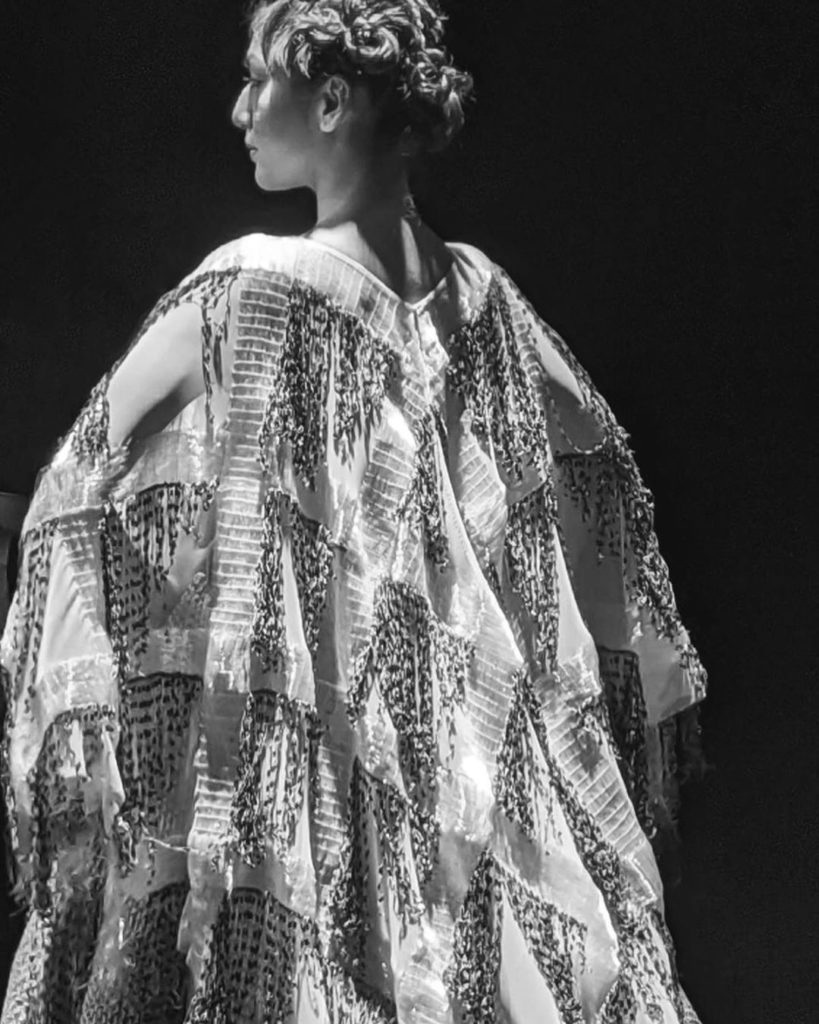
Fishnets and metallic foils re-engineered to make the fabric is a feat that AKHL has turned into a creative venture. From upcycling unmalleable materials to the detailed technicalities of fabric making, the label works with local weavers to make free-flowing gender-neutral garments. The structure of their pieces is evocative, unburdened, and unwavering in their sustainability; their forte being the reuse and upcycling of versatile materials to create ethereal elements.
The ethos of Indian sustainability lies not in the adaptation of international practices but in what is currently a renaissance of ancient techniques, rooted in the simplicity of weaving villages across the country. To blend this handspun thread into a pattern of gender complexities is yet another step towards a worldview that sees beyond the obvious and into the abstract to glean from centuries-old knowledge and apply it to the contemporary framework.
Fashion, to a large extent, shapes societal thinking. It may require sludging through years of unresolved and hidden layers, but with labels that aspire to be pioneers of eco-gender fashion and upcycled couture, the Indian handloom industry has messiahs to restore it to it’s deserved merit.